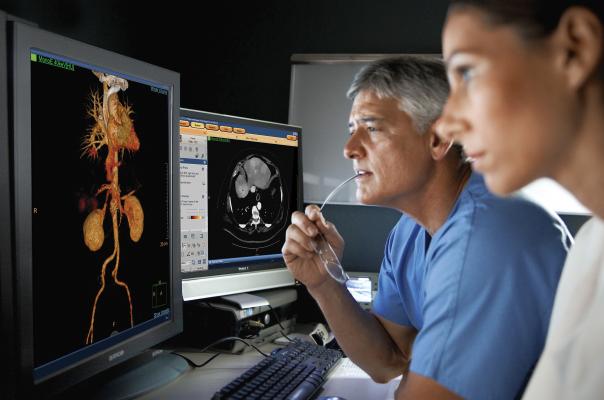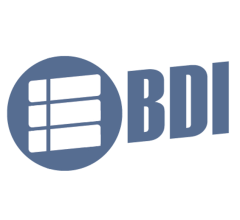
Image courtesy of Philips Healthcare
According to the U.S. Centers for Disease Control and Prevention (CDC), one person dies every 37 seconds in the United States from cardiovascular disease.
Rising healthcare expenditure and escalation in innovation and technologies are major drivers which are expected to fuel the cardiac computed tomography (CCT) market’s significant growth in the forecast period 2021-2028, according to analysis by Data Bridge Market Research (DBMR). The rising demand for diagnosis and testing — due to a consistent rise in the number of cardiac patients and circulatory diseases worldwide, combined with increased research and development activities, continue to propel global demand for this valuable diagnostic tool.
A study published in Radiology: Cardiothoracic Imaging focused on cardiac imaging trends over a decade. It reported the rate of coronary computed tomography angiography (CCTA) exams by radiologists in hospital outpatient departments increased markedly from 2010 to 2019. Over that period, the rates of CCTA by radiologists in hospital outpatient departments increased by 355%, according to findings of Russell A. Reeves, MD, Ethan J. Halpern, MD, and Vijay M. Rao, MD, FACR, from Thomas Jefferson University Hospitals. Data was pulled from 2010–2019 Physician/Supplier Procedure Summary (PSPS) files obtained from the Centers for Medicare and Medicaid Services (CMS) website. While precise numbers are not yet recorded since the COVID-19 pandemic, it seems widely-recognized consensus that the use of coronary CTA as a valuable diagnostic screening tool for coronary artery disease continues to grow significantly. A summary of forecasts follow.
DBMR reported that the North America cardiac computed tomography market is growing with a CAGR of 6.2% in the forecast period of 2021 to 2028, and is expected to reach $2,898.58 million by 2028, from $1,831.53 million in 2020. Rising healthcare expenditure and escalation in innovation and technologies are major factors which are expected to drive the growth of the market in the forecast period.
North America’s anticipated dominance in the global market is due to rising technological advancement and the rising prevalence of cardiac disease. DBMR’s analysis suggests Asia-Pacific is expected to grow with the highest CAGR in the forecast period, due to increasing healthcare expenditure in the region, and the European market is also expected to grow significantly in the forecast period due to technological advancements in the region, with Germany dominating, owing to the large number of players in the market.
The researchers note that on the basis of application, the global CCT market is segmented into calcium scoring, which consistently dominates the market, coronary CT angiography, device implantation, pulmonary vein isolation and left atrial appendage occlusion. On the basis of end user, the global CCT market is segmented into hospitals, specialty centers, diagnostic and imaging centers and others. The surging pool of cardiac patients in 2021 contributed to the dominance of the hospitals segment.
Major Players, Imaging Innovations
The common thread among all vendors in this market is the shared goal of helping streamline workflow and improve operational performance with high-value imaging and measurable, sustained benefits throughout the cardiovascular care continuum.
Cardiac imaging software offers upgraded resolution and overall details of the heart’s working for productive diagnosis in diagnostic cardiology and interventional planning.
Positioned as the only dedicated cardiac CT, GE Healthcare’s Cardiographe presents technology which the company reports includes low-dose, fast temporal resolution with a 0.24 second rotation speed, cardiovascular applications from scoring to TAVR, cardiac focused workflow for staff productivity, one beat whole heart coverage (140 mm), and high resolution (0.28 mm).
For its part, Canon offers AI-powered, low-dose CT cardiac imaging capabilities across its Aquilion Family of CT systems. Canon Medical’s range of SureCardio technologies provide robust, automated cardiac images with its “harmonized portfolio of capabilities,” as noted by the company.
Key features include: Intelligent and automatic selection of reconstruction parameters; real-time heart rate monitoring and exposure timing; dose reduction based on image quality standards and patient’s size, determined by scanogram; improved visualization of plaque; and reduction in blooming artifact which may add in assessment of in-stent restenosis.
With its Dual Source CT Scanner product line, Siemens Healthineers offers the Somatom Definition Flash, Somatom Drive and Somatom Force in its latest product line. The company notes that intelligent automation supports safe, standardized, and highly performant workflows, allowing reproducible precision. The increasing number of cardiovascular imaging referrals, and complexity of patients needing scans, necessitates stopping motion in the patient, coronaries and lungs for optimal imaging, adding to the importance of key features.
The Philips CT Comprehensive Cardiac Analysis (CCA) and advanced LV/RV functional analysis reportedly provide endoluminal and epiluminal segmentation of the heart chambers to calculate ejection-fraction, stroke volume, cardiac output, and left and right ventricular mass. It visualizes the entire coronary tree, vessel lumen via morphological analysis, and analyzes free lumen diameter, notes the company. Additionally, it provides a functional analysis of ventricles, and analyzes chamber and valve morphology in 3-D using dynamic cine mode. New added calculations include regurgitation volume and fraction index, RV/LV Early and Late (active and passive) filling volumes, and early/late LV filling ratio. Clearly, rising demand has resulted in rising market growth.


 December 10, 2025
December 10, 2025 









